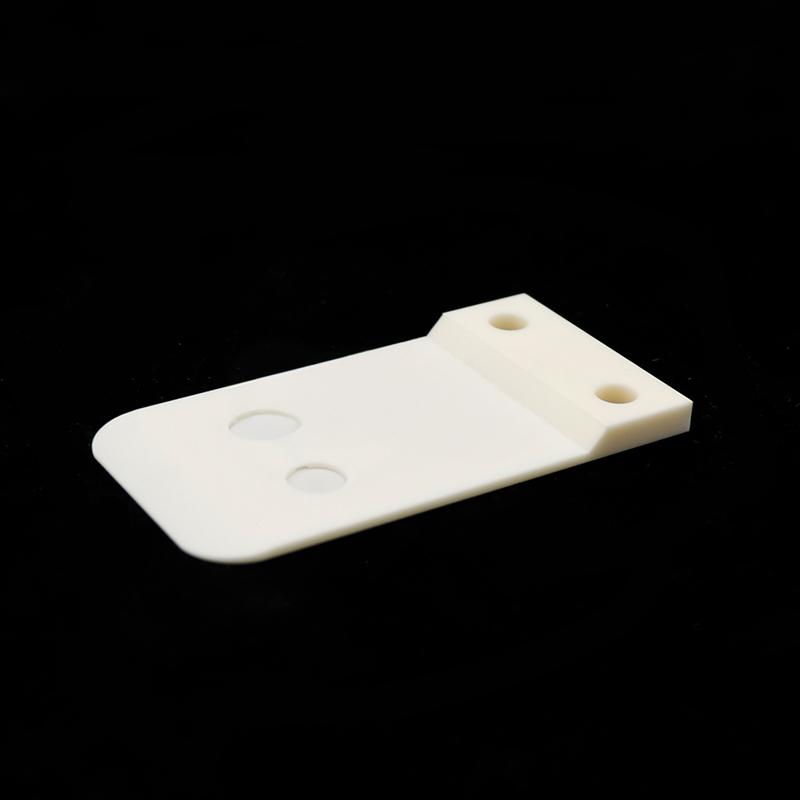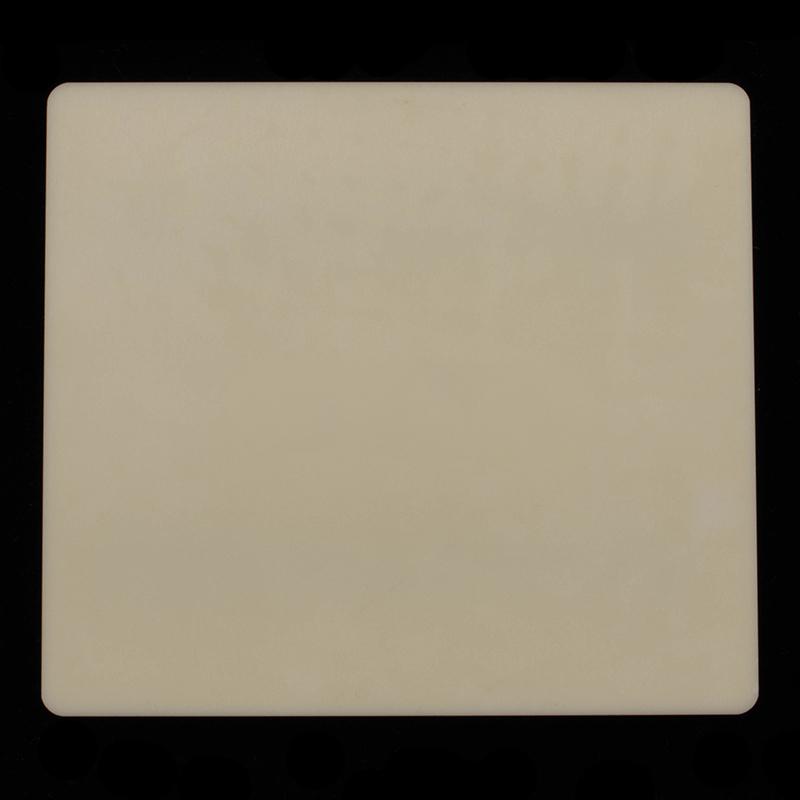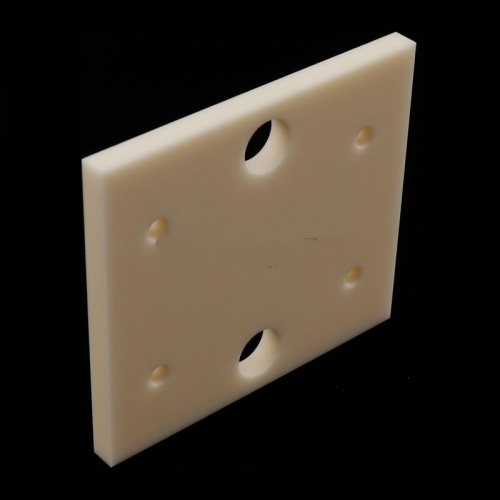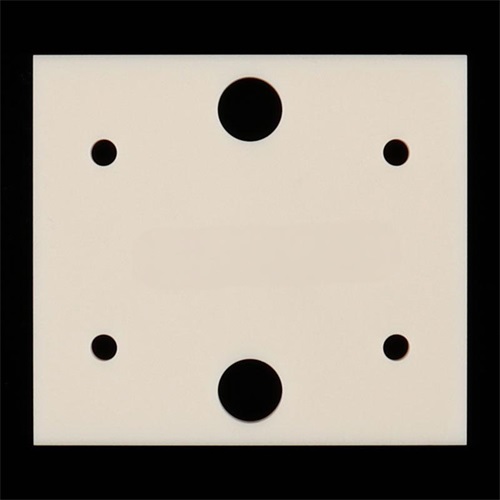The use of aluminum nitride ceramic substrate
Aluminum nitride ceramic substrate is a high-performance electronic material that is widely used in various high-tech fields due to its excellent thermal conductivity, electrical insulation, and mechanical strength.

Overview of Aluminum Nitride Ceramic Substrate
Aluminum nitride ceramic substrate is a ceramic material mainly composed of aluminum nitride (AlN), which is made through sintering process. Its core characteristics include high thermal conductivity (up to 170-230 W/m · K), high electrical insulation, low thermal expansion coefficient, and mechanical properties that match silicon. These characteristics make it an ideal substrate material for high-power, high-frequency electronic devices.

Main application areas
The application of aluminum nitride ceramic substrates covers multiple industries, especially in scenarios that require efficient heat dissipation and reliable performance.
- Power Electronics and Power Modules
-Application examples: Aluminum nitride ceramic substrates are used as heat dissipation substrates in insulated gate bipolar transistors (IGBTs), power converters, and motor drivers for new energy vehicles. For example, in the inverter module of an electric vehicle, it helps manage the heat generated by high currents to ensure stable system operation.
-Problem solved: Traditional substrates (such as alumina) have low thermal conductivity, which can easily lead to equipment overheating and failure. Aluminum nitride substrates extend equipment lifespan and improve energy conversion efficiency through efficient thermal conductivity. - LED lighting and display technology
-Application example: In high-power LED chips such as car headlights and outdoor display screens, aluminum nitride ceramic substrates are used as substrate materials to effectively dissipate the heat generated by the LED. For example, some high-end LED lighting fixtures use aluminum nitride substrates to maintain brightness and color consistency.
-Problem solved: LED overheating can cause light decay and color cast. The high thermal conductivity of aluminum nitride substrate prevents heat accumulation, improving the reliability and service life of LED. - Radio frequency and microwave communication
-Application example: Aluminum nitride ceramic substrates are used to manufacture high-frequency circuit substrates in 5G base stations, radar systems, and satellite communication equipment. For example, the substrate of 5G power amplifiers uses aluminum nitride to support high-frequency signal transmission.
-Problem solved: High frequency equipment is susceptible to heat and signal loss. The low dielectric constant and excellent heat dissipation of aluminum nitride reduce signal attenuation, ensuring communication stability. - Semiconductor packaging and integrated circuits
-Application example: In high-end chip packaging such as CPUs and GPUs, aluminum nitride ceramic substrates are used as thermal interface materials or packaging substrates. For example, some server processors use aluminum nitride substrates to manage the heat of high-density integrated circuits.
-Problem solved: The miniaturization of semiconductor devices leads to an increase in thermal density, and traditional materials are unable to effectively dissipate heat. Aluminum nitride substrate improves computational performance and reliability by rapidly conducting heat, preventing chip overheating. - Automotive Electronics and Aerospace
-Application examples: Aluminum nitride ceramic substrates are used for high reliability circuits in battery management systems for new energy vehicles and aerospace electronic equipment. For example, the charging module of electric vehicles uses aluminum nitride substrate to cope with the high temperature generated by fast charging.
-Problem solved: Electronic devices are prone to failure in extreme environments such as high temperatures and vibrations. The heat resistance and mechanical strength of aluminum nitride ensure stable operation of equipment under harsh conditions. - Industrial and Medical Equipment
-Application example: In laser diodes and medical imaging equipment (such as X-ray generators), aluminum nitride ceramic substrates are used as heat dissipation components. For example, industrial laser cutting machines use aluminum nitride substrates to maintain the accuracy of the laser source.
-Problem solved: Insufficient thermal management of high-power devices can affect accuracy and safety. Aluminum nitride substrate improves equipment performance and safety through efficient heat dissipation.

Product Advantage Analysis
The widespread application of aluminum nitride ceramic substrates benefits from its multiple advantages, which are based on material science principles and validated through experimental data:
-High thermal conductivity: The thermal conductivity is 5-10 times that of alumina, which can quickly transfer heat and reduce equipment operating temperature.
-Excellent electrical insulation: high dielectric strength, suitable for high voltage environments, preventing the risk of breakdown.
-Low thermal expansion coefficient: matched with silicon chips to reduce cracking or delamination caused by thermal stress.
-Chemical stability: Corrosion and oxidation resistance, suitable for harsh environments.
-High mechanical strength: The bending strength and hardness support miniaturization and high-density packaging.

Solved problems and industry impact
Aluminum nitride ceramic substrates solve the core challenges in the electronics industry:
-Thermal management issue: In high-power equipment, heat accumulation is the main source of failure. Aluminum nitride substrate reduces equipment temperature by 20-50% through efficient heat dissipation, significantly improving reliability and energy efficiency.
-The demand for miniaturization: With the development of electronic products towards miniaturization, traditional substrates cannot meet the heat dissipation requirements. The high thermal conductivity of aluminum nitride supports more compact designs and drives technological innovation.
-Performance optimization: In the fields of communication and computing, aluminum nitride substrates reduce signal loss and thermal noise, improving overall system performance.
According to industry reports, the average lifespan of equipment using aluminum nitride ceramic substrates can be extended by over 30%, which is particularly important in new energy vehicles and 5G infrastructure.

Aluminum nitride ceramic substrate, as a high-performance material, is widely used in power electronics LED、 Communication, semiconductor and other fields play a key role. Its advantages lie in efficient thermal management, reliable electrical insulation, and strong mechanical performance, directly solving problems such as equipment overheating, performance degradation, and shortened lifespan.
Brudeze Ceramics supplies and sells a wide range of high-quality quartz glass, including alumina ceramics, zirconia ceramics, silicon nitride ceramics, aluminum nitride ceramics, silicon carbide ceramics, boron carbide ceramics, bioceramics, machinable ceramics, etc. We can meet the customization requirements of various ceramic products.
Tags: boron carbide ceramics
PREVIOUS:Performance and characteristics of zirconia ceramic plunger
CATEGORIES
LATEST NEWS
- Petrochemical ceramic injec...
- Zirconia Ceramic Rod Custom...
- High-temperature resistance...
- What is the wear resistance...
- What is the hardness of cer...
- Aluminum oxide ceramic cust...
- What are the main aspects o...
- What are the mechanical pro...
- Thermal properties of zirco...
- What properties should be c...
